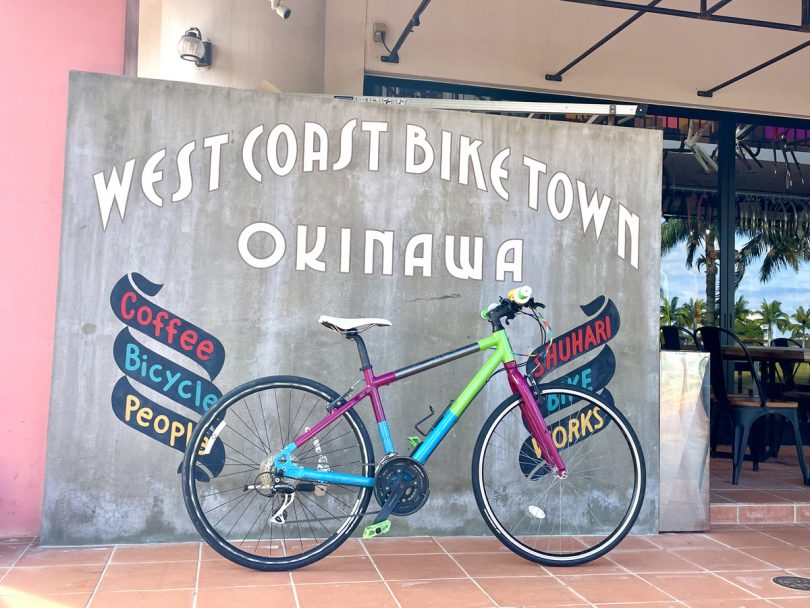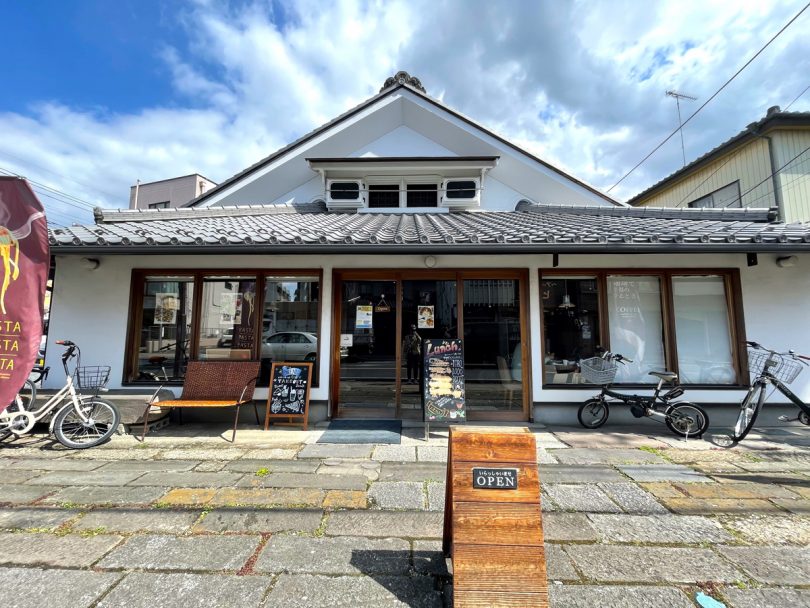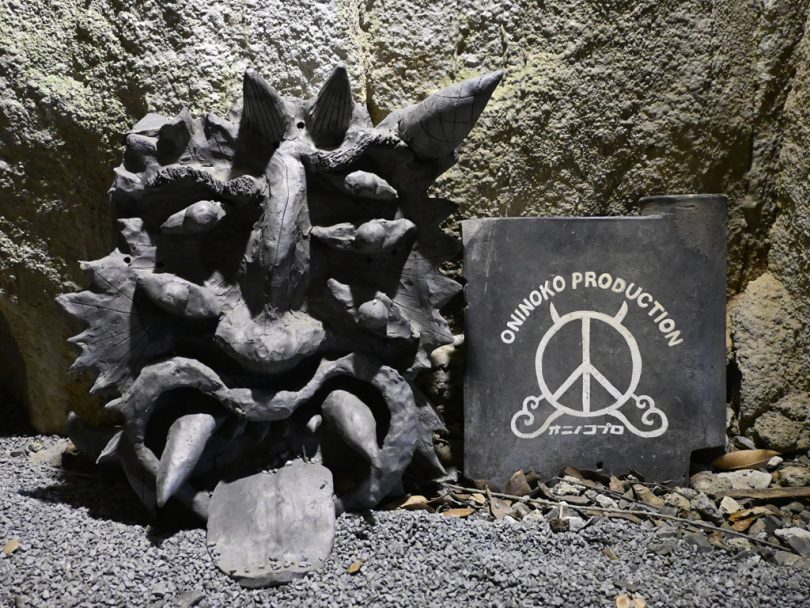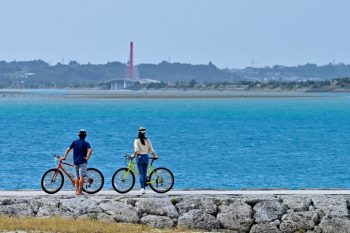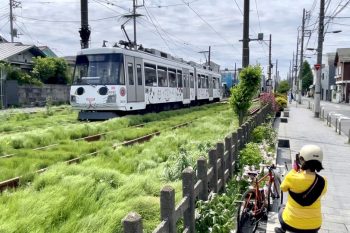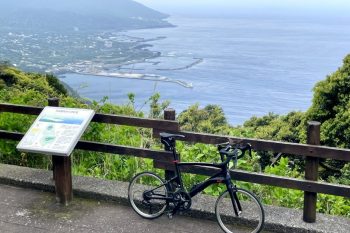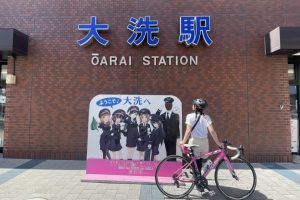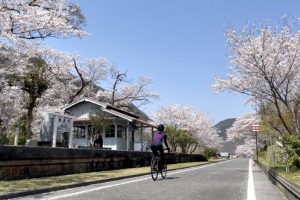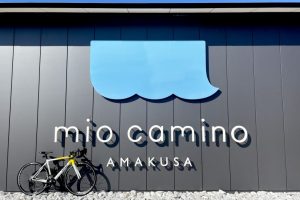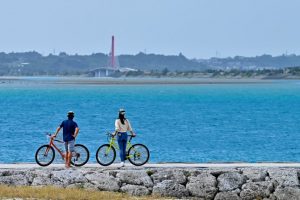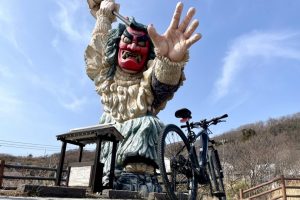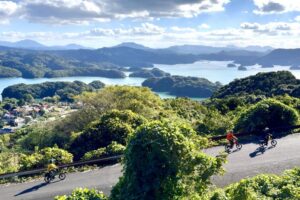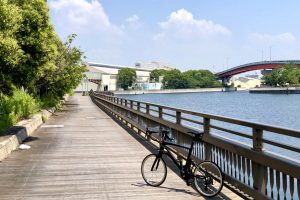The train runs through Oguni Town, the birthplace of Dr. Shibasaburo Kitasato, whose portrait will appear on the new 1,000-yen bill in 2024. Oguni Town used to be served by Miyanoharu Line of Japan National Railways, which ran from Era Station in Oita Prefecture to Higo Oguni Station in Kumamoto Prefecture.
The old railway line was discontinued in 1984, and now a 4-km promenade stretches from Oguni Yu Station (the site of the former Higo Oguni Station) to the site of Kitasato Station. In addition, the farm road on the Oguni wide-area farm road offers a spectacular view.
Contents
- Starting from Michi no Eki Oguni
- Kitasato Shibasaburo Memorial Musesum
- Two bridges can be viewed at the same time
- Cycling on Farm Road, a wide-area farm road
- Husband and Wife Falls and Benzaiten Waterfall
- Tea room CHANOKO with delicious Yamecha tea
- Oguni Township’s “Fukuun Sanja Mairi” (Tour of the Three Lucky Shrines)
- Back to the goal at Roadside Station Oguni
- Course Introduction
- Summary
Starting from Michi no Eki Oguni
The starting point, Roadside Station Oguni, is a modern building with all-glass mirror walls. The adjacent information center, ASO Oguni Tourist Association, provides tourist information and rental bicycles.
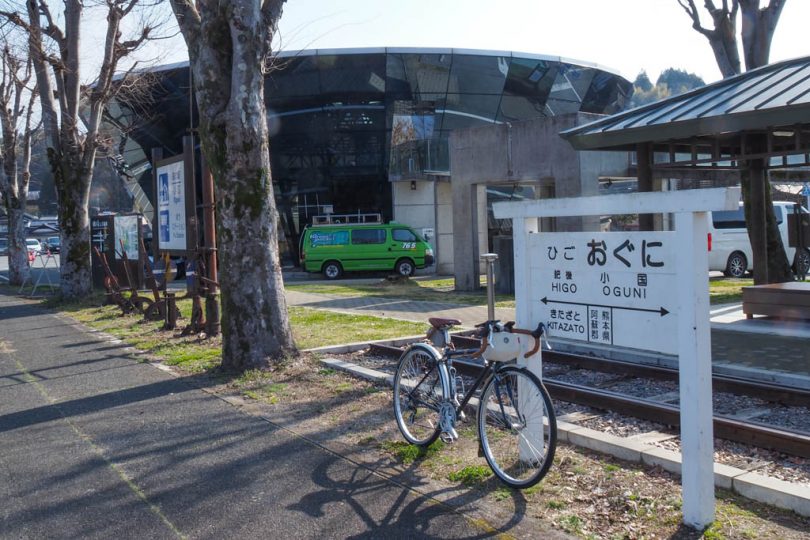
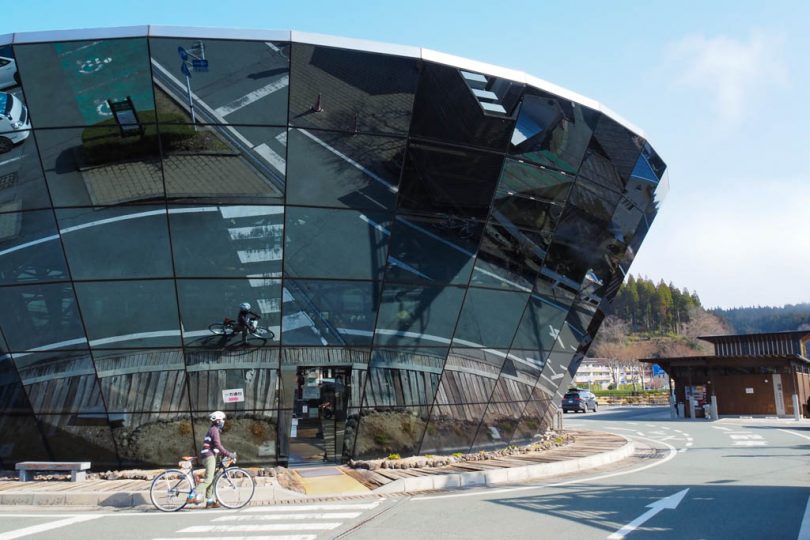
Immediately after the roadside station, there is an entrance to the former Japan National Railways (JNR) Miyahara Line promenade.
Be careful, as it is a little difficult to find. There are no railroad rails, but the straight path gives the atmosphere of the former railway tracks.
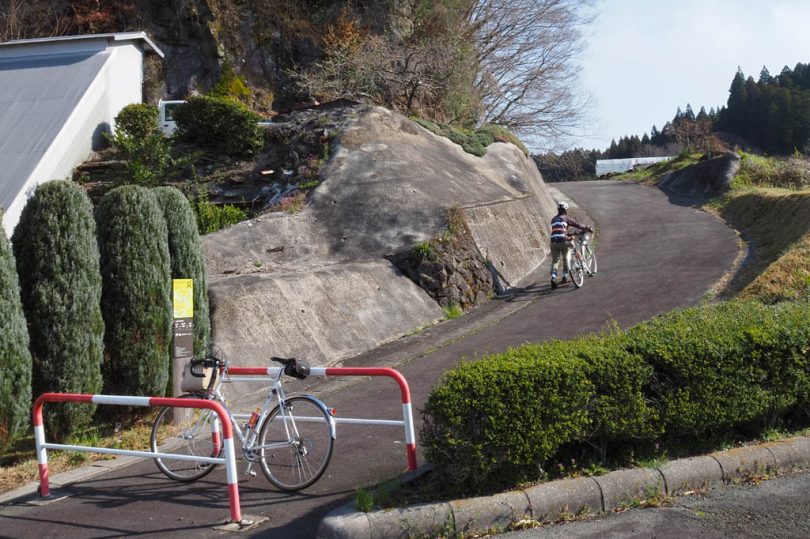
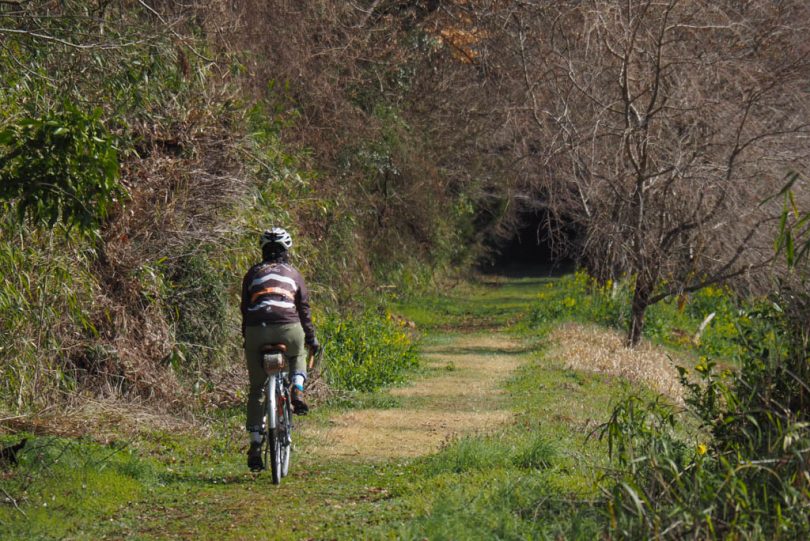
A boardwalk with about 4km of gravel
A dark tunnel appears soon after the start. It is so dark that you cannot see what is ahead even in daylight, but there is a light switch to help you. Don’t forget to turn off the light at the exit!
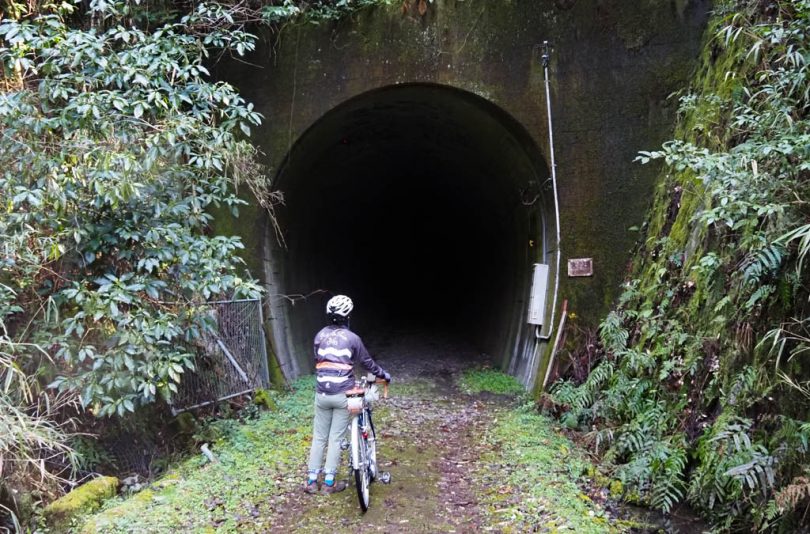
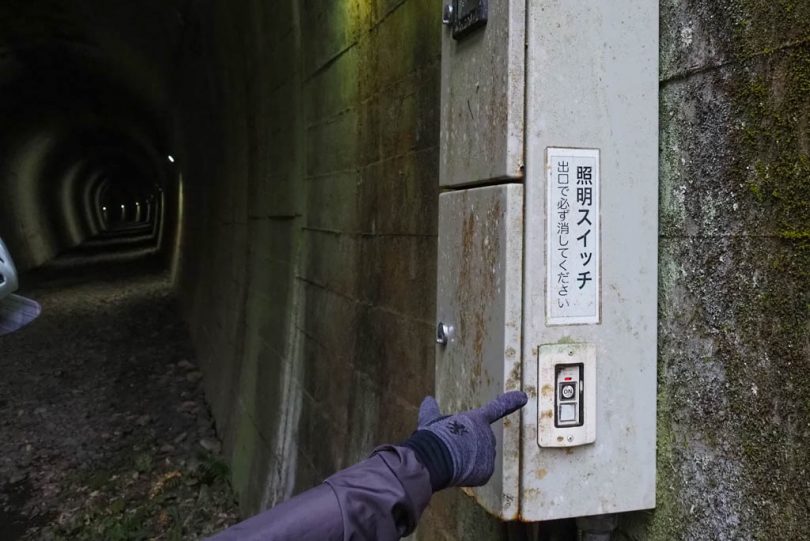
The tunnel is littered with large stones, so for your safety, you will have to push your way through.
Injuries and accidents at the old abandoned Miyahara Line site are your responsibility. When pedestrians are present, pedestrians have priority.

Kounogawa Bridge at Takesuji Bridge
This is a relatively flat dirt road, so even those who are not confident in gravel riding can ride with relative ease. After a short ride, a large arch bridge comes into view. Kounogawa Bridge is said to have been constructed of bamboo instead of reinforced concrete due to the shortage of iron during the war. It is said that bamboo-steel bridges are rare in Japan. It looks like an ordinary concrete bridge!
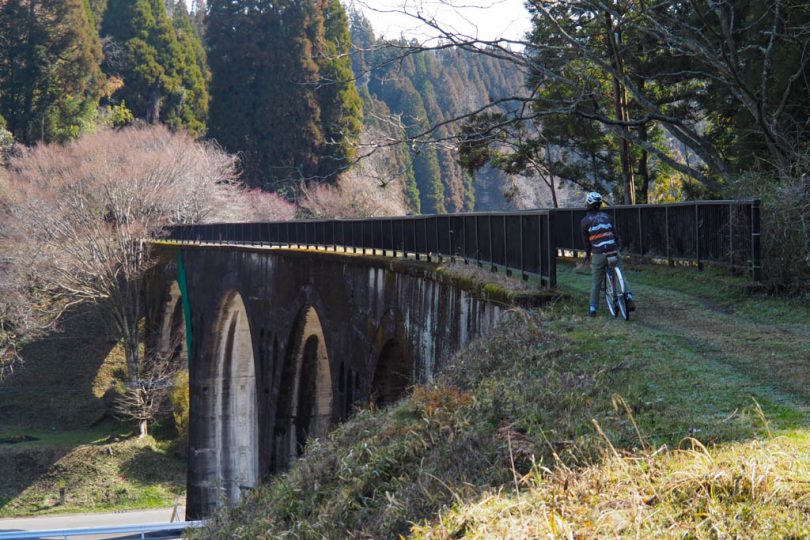
The bridge is fenced off for safe crossing. The view of the countryside from the bridge is idyllic.
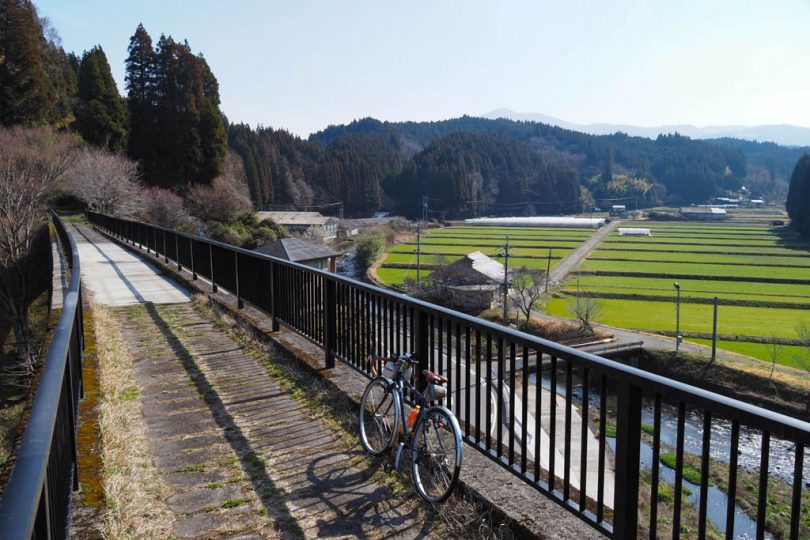
The abandoned railway track with its tunnel of trees is quiet and pleasant. There are not too many big stones and well-trodden gravels, so you can afford to enjoy the scenery.
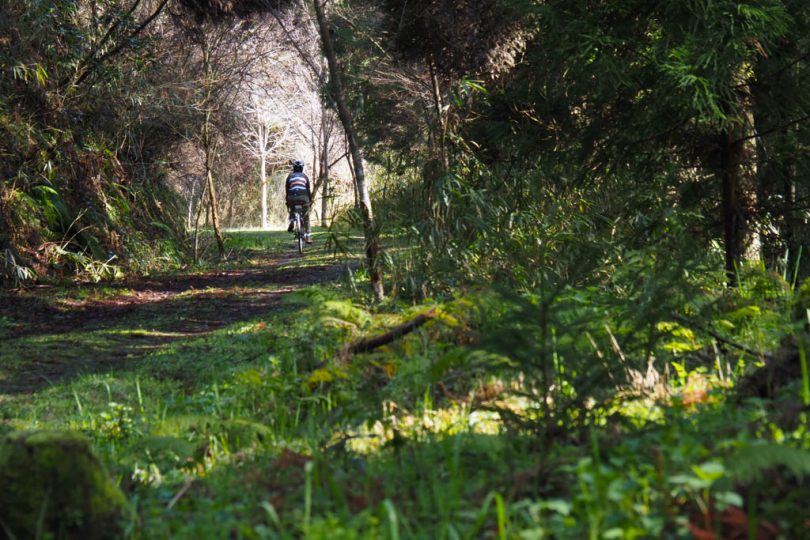
After the second Kitasato Tunnel, the dirt road ends and the road becomes a public road.

Kitasato Shibasaburo Memorial Musesum
Dr. Shibasaburo Kitasato, who was selected for the 1,000-yen bill, which is scheduled to be redesigned in fiscal 2024, is a native of Oguni Town and a world-renowned bacteriologist for his research on tetanus bacillus and other bacteria.
Let’s learn about the doctor who will be the face of the next 1,000-yen bill at Kitasato Shibasaburo Memorial Museum, which was renovated from the Kitasato Bunko (library) donated by Dr. Shibasaburo Kitasato.
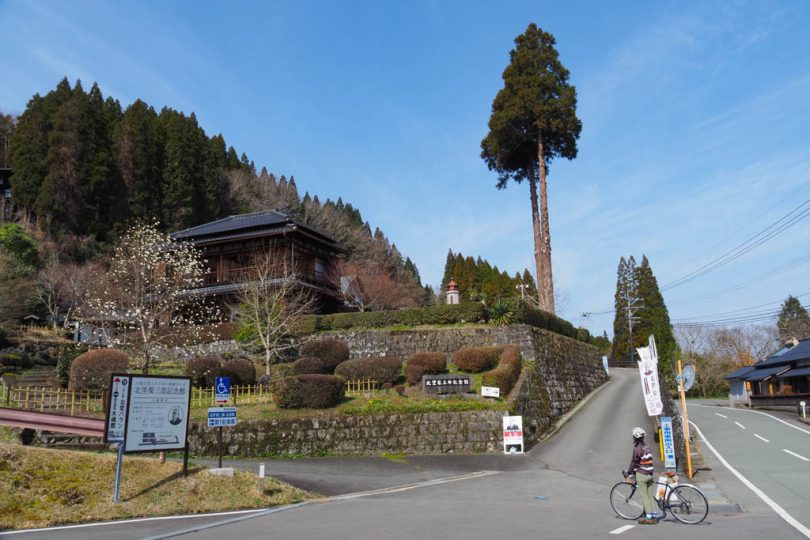
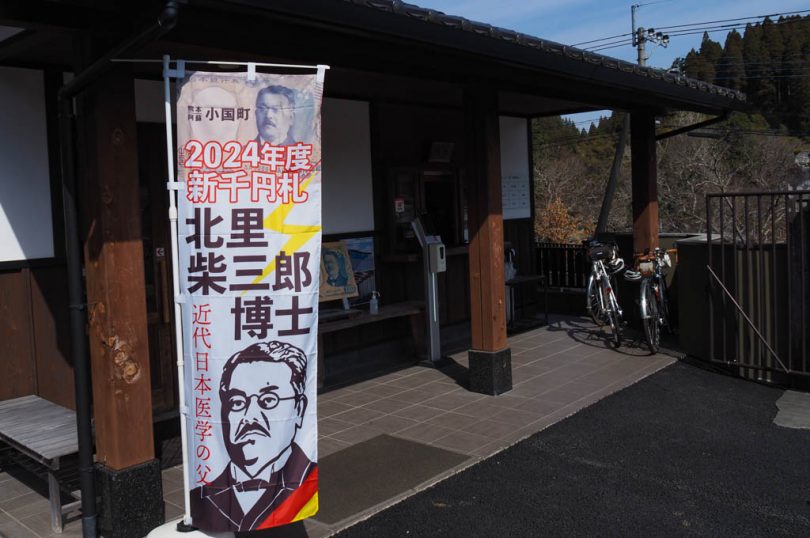
The watermarked area is a face frame panel.
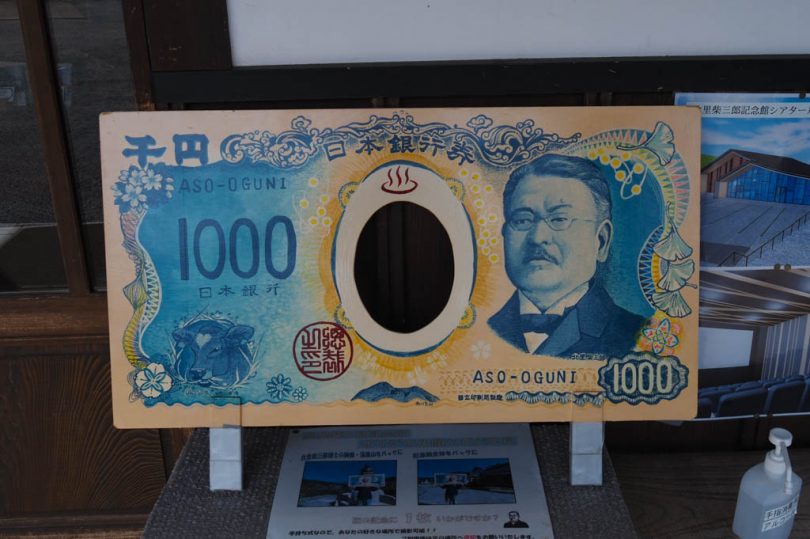
Kitasato Bunko, which Dr. Kitasato gave to the youth of his hometown with his private fortune, is a wooden Western-style building with lovely letters.
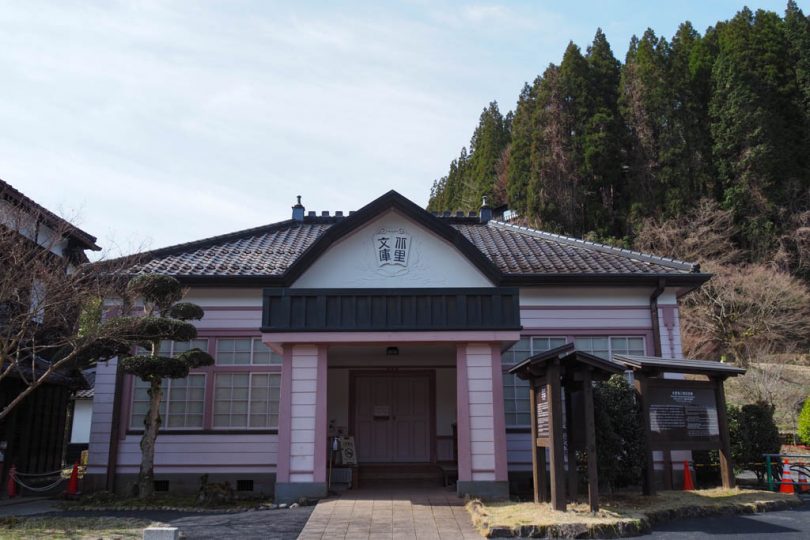
Visitors can also enter and see the guesthouse made of a large Oguni cedar tree.
From the terrace on the second floor, you can see Mt.Waita.
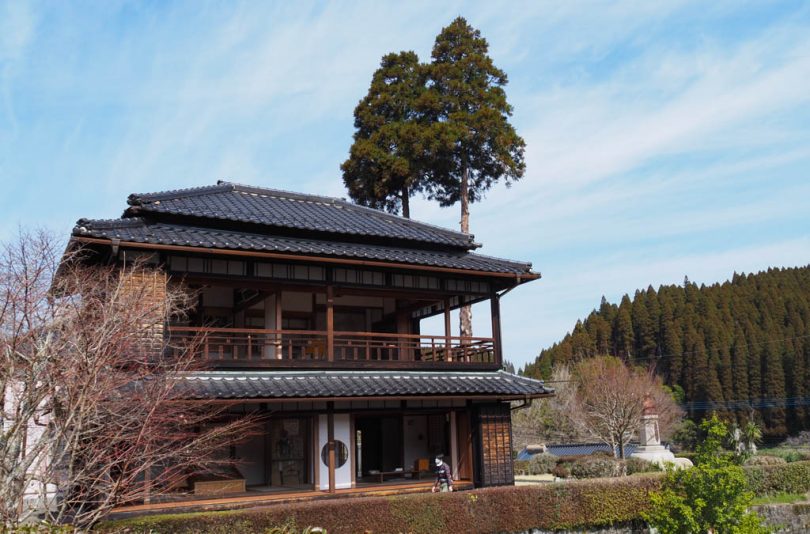

There is also a face frame panel here. Is this a scene from a research project?

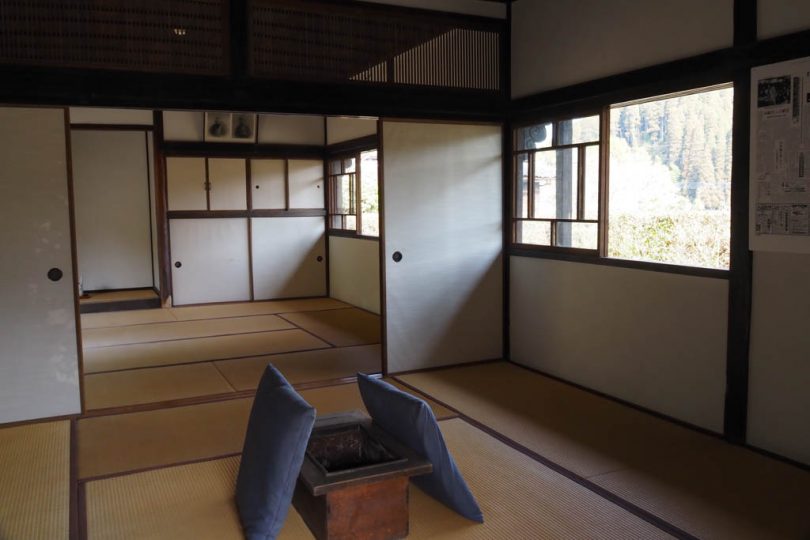
A new digital exhibition facility was under construction on the adjacent site.
Uniquely designed Mokkonkan (Mokkonkan)
Mokkonkan, a training and exchange facility built to inherit Dr. Shibasaburo Kitasato’s spirit “learning and interact,” is a unique facility that makes abundant use of Oguni Town’s cedar trees. It offers lodging and camping. Other facilities include a restaurant and a drop-in hot spring called “Doctor’s Hot Spring”.
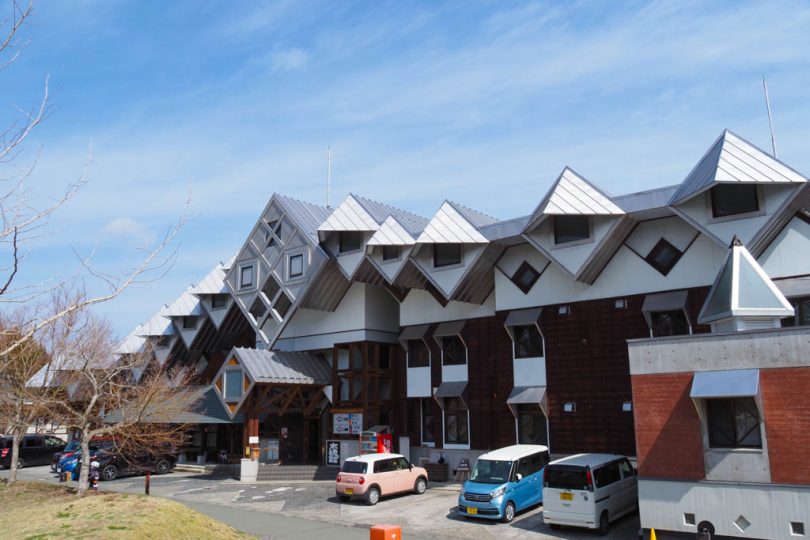
Kitasato Forest Kiosk at the station where no trains run
The former Kitasato Station is the last stop on the former Japan National Railways (JNR) Miyahara Line wiring trail.
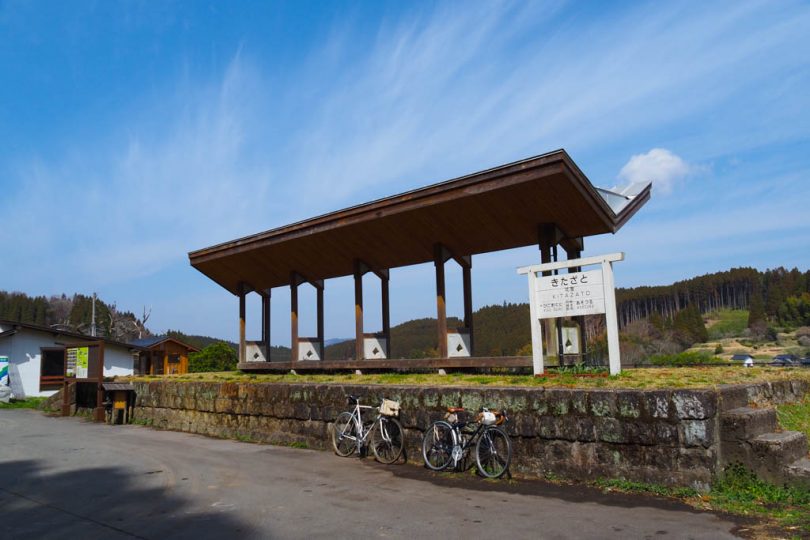
On the site of the former platform of the old Kitasato Station, there is a store called Kitasato Forest Kiosk. Local elderly people fund the store themselves and sell vegetables and processed goods. There are not many stores around, so we appreciate this kind of direct sales place.
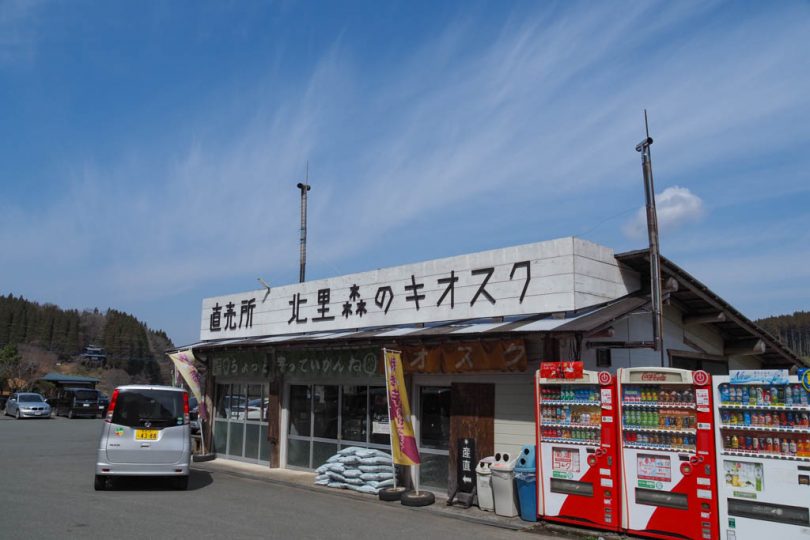
Two bridges can be viewed at the same time
Doyama and Shioigawa bridges near Hotaru no Sato Onsen are adjacent to each other and can be seen at the same time. The two bridges are picturesque, standing side by side in a landscape of terraced rice paddies.
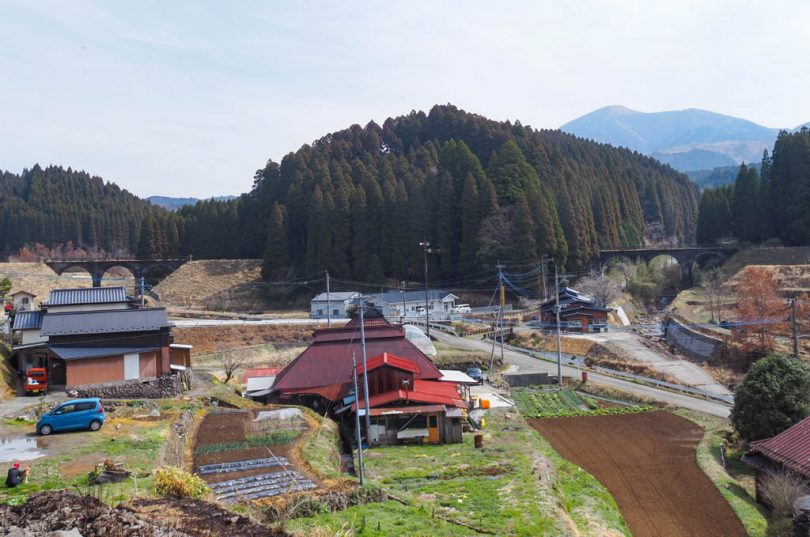
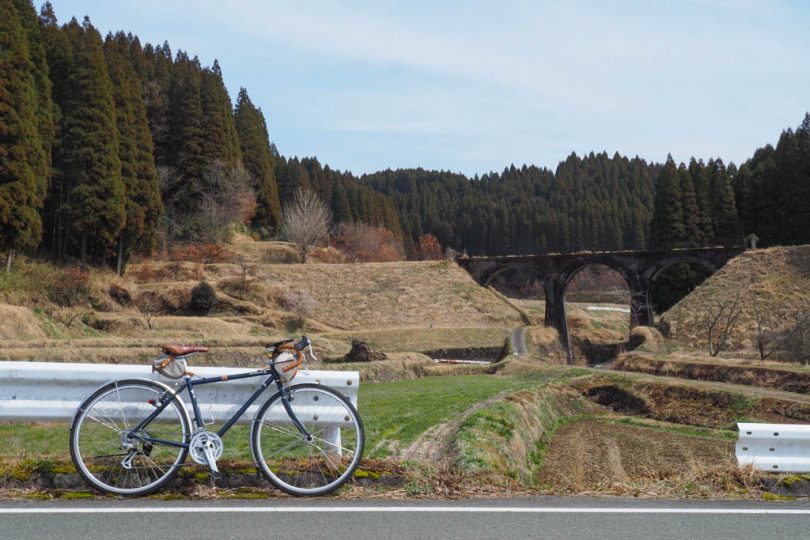
Passing through the arches of the Doyama Bridge, you will run along Kitasato River.
You will see the high piers of Farm Road in front of you. Take a roundabout way and climb up.
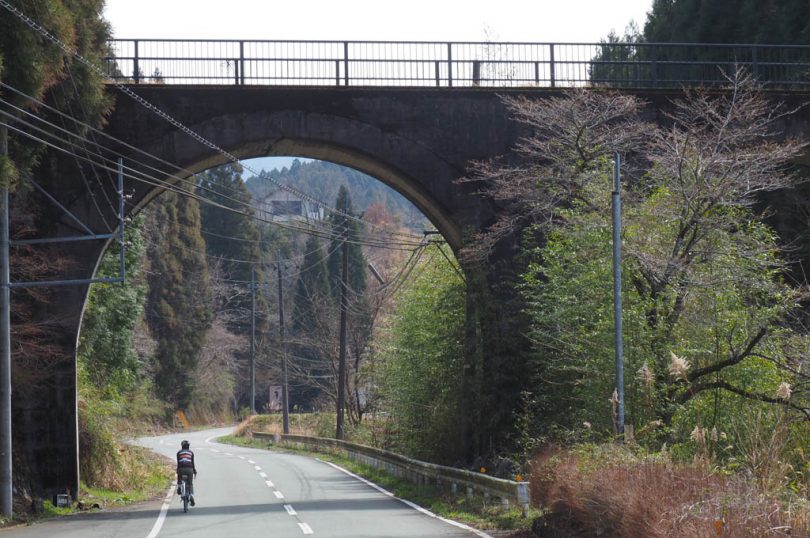
Cycling on Farm Road, a wide-area farm road
Once you enter the farm road, the road is wide and the view is good.
There are relatively few cars on the road, but there are many motorcycles, so be careful when cycling around curves.
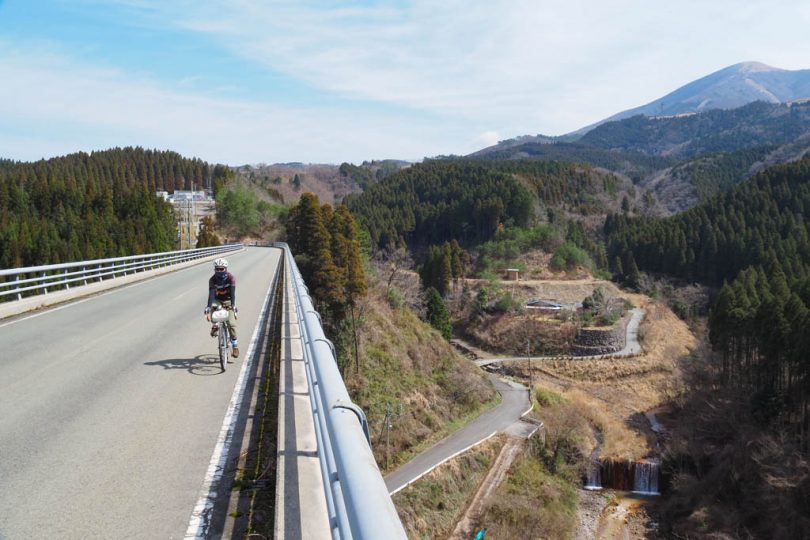
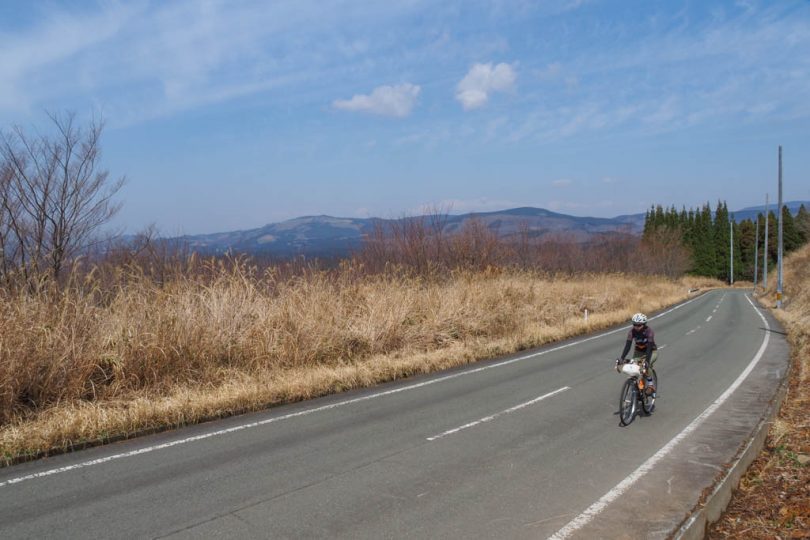
After a moderate up-and-down course, you will come to a pasture-like area. There is a viewing point with a pavilion and benches along the way, which is good for a break.
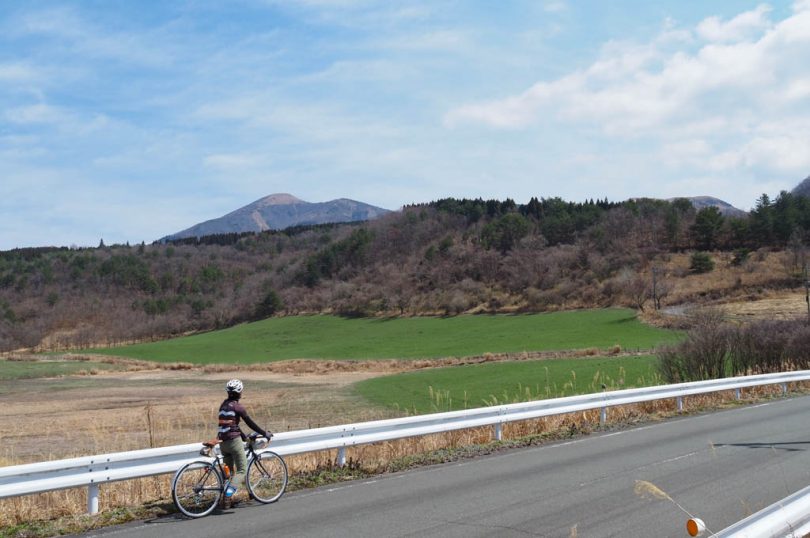

Farm Road is a road connecting mountains, so ups and downs continue.
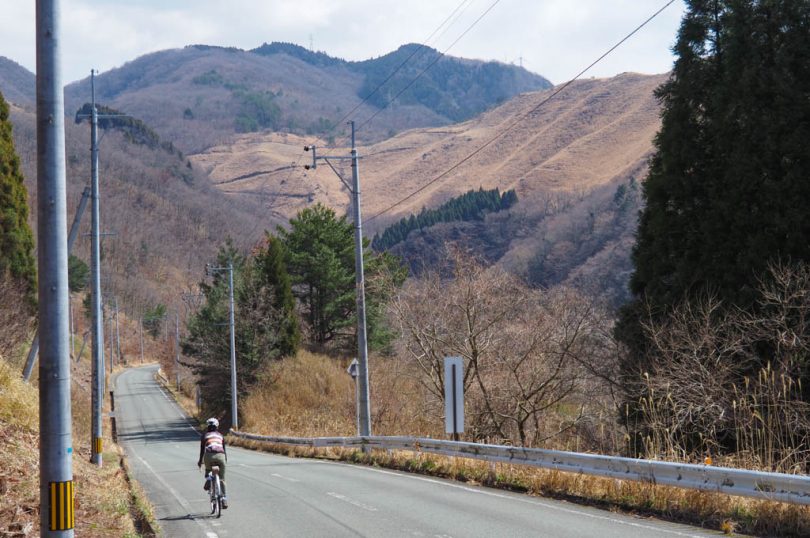
At a large curve in the road, we saw a sign for a soba noodle shop, “wanohana”, so we stopped by.
There were many cars and motorcycles parked in the parking lot, indicating that it is a popular restaurant.
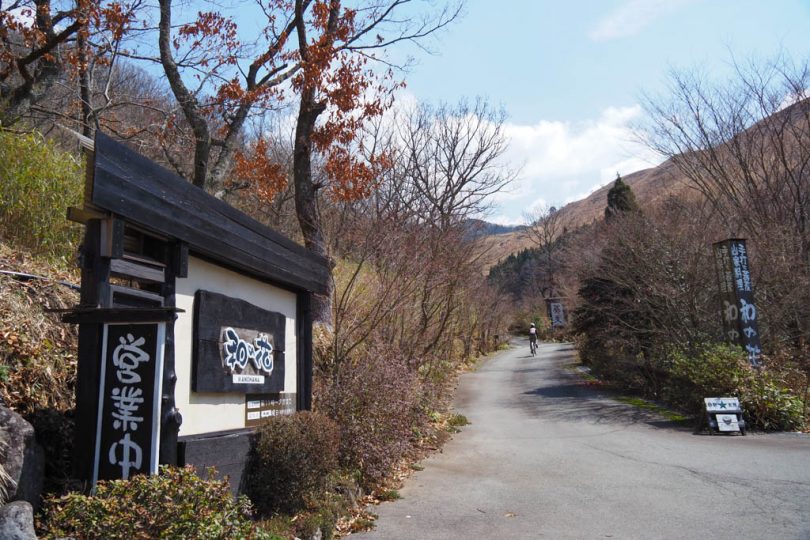
“Chicken steamed in hell” is the specialty
The building is in the style of an old private house, and the restaurant has a spacious and relaxed atmosphere. There are many seats, including sunken hearth seats and terrace seats.
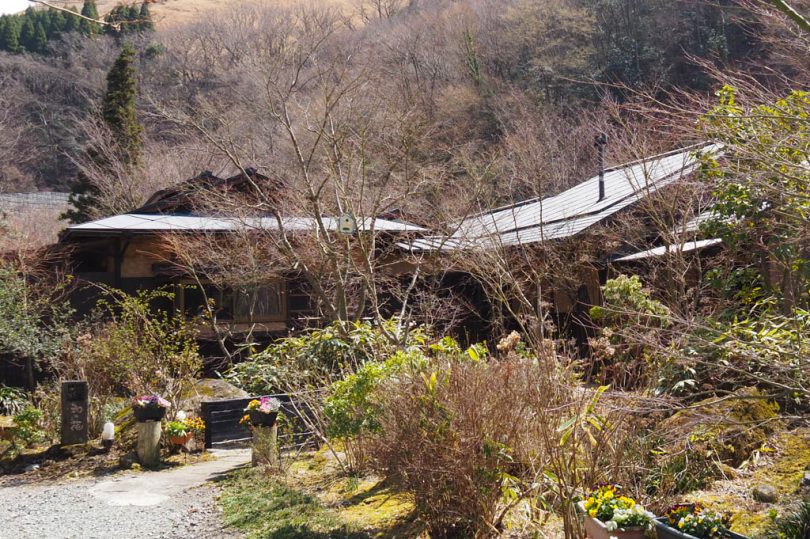
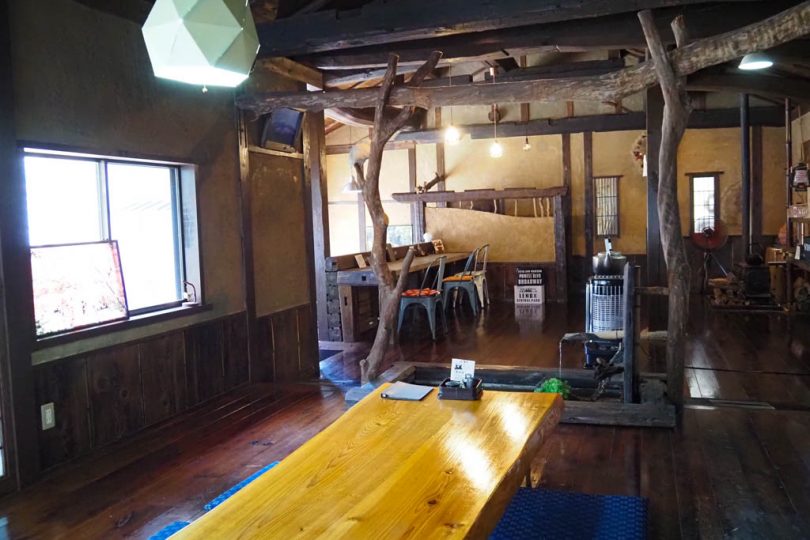
We ordered the Japanese-style set meal, which includes the popular “Jigoku-mushi (Chicken steamed in hell)” and “Morisoba”.
Jigoku-mushi is a horrible name, but it refers to a chicken dish steamed for two hours in the nearby Bald Hot Springs…we were excited to see what it tasted like.
There are two choices of sauce and salt, so we opted for salt. The steamed chicken was tender enough to be loosened with chopsticks and tasted delicious without being mushy. We were worried that we wouldn’t be able to finish it because it was so big, but we were able to eat it in one piece.
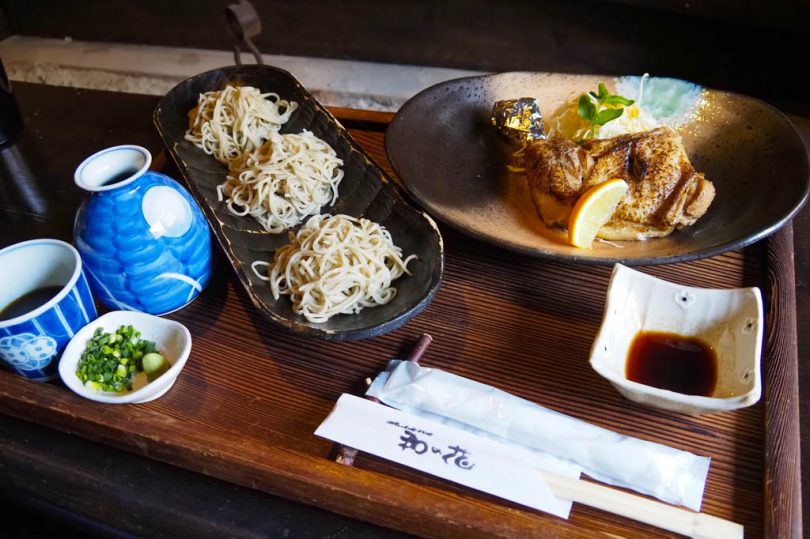
Husband and Wife Falls and Benzaiten Waterfall
After leaving the buckwheat noodle restaurant and riding for a while, the farm road ends as you enter Minami-Oguni Town from Oguni Town.

Exit to Route442 and turn right, and you will soon see a sign for Husband and Wife Falls.
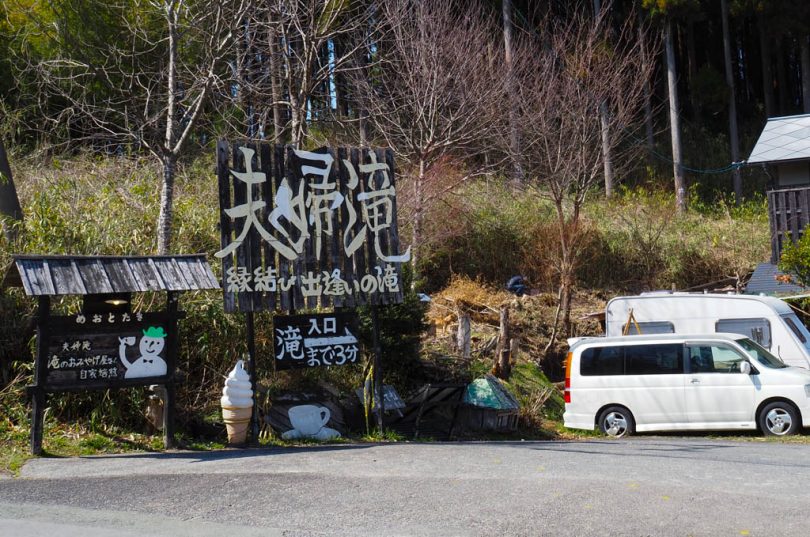
These two waterfalls are located at the confluence of Oda river and Tanohara river, and their appearance side by side on either side means that they are called “Husband and Wife Falls. It is also famous as a waterfall for marriage, and heart-shaped ema (votive picture tablet) were tied all over the place.
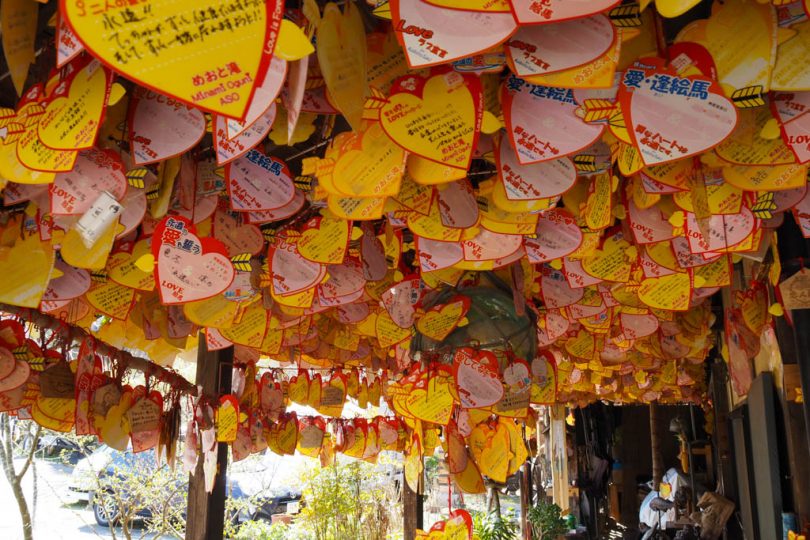
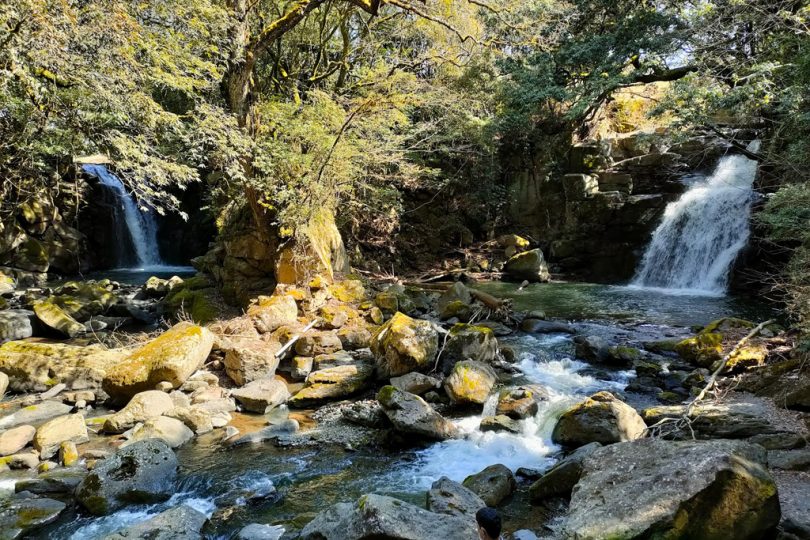
As we rode from National Route442 toward Prefectural Route40, we saw an oval curved mirror. It was interesting because it was not seen it much anywhere else.
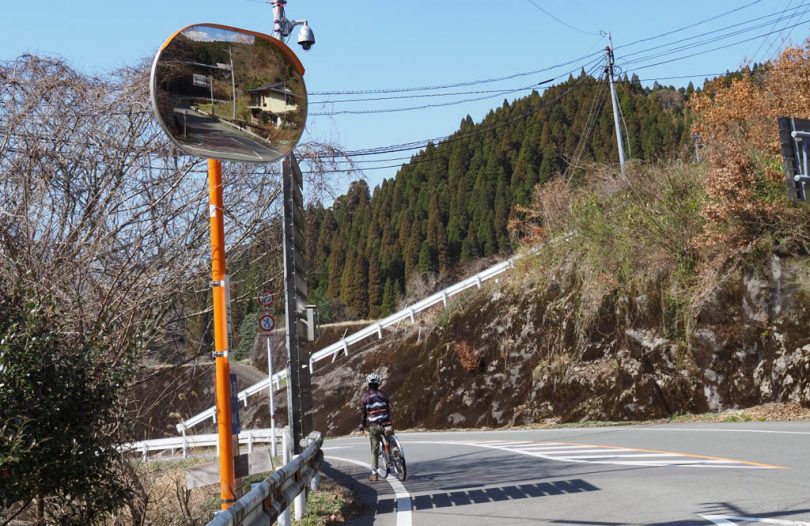
You can also see Benzaiten Falls from the bridge crossing Manganji River. Be careful not to pass by it by accident.

Large zelkova tree at Takenokuma
Cross the Shigase River near the Arakura bus stop with its cute thatched roof on Prefectural Route40.
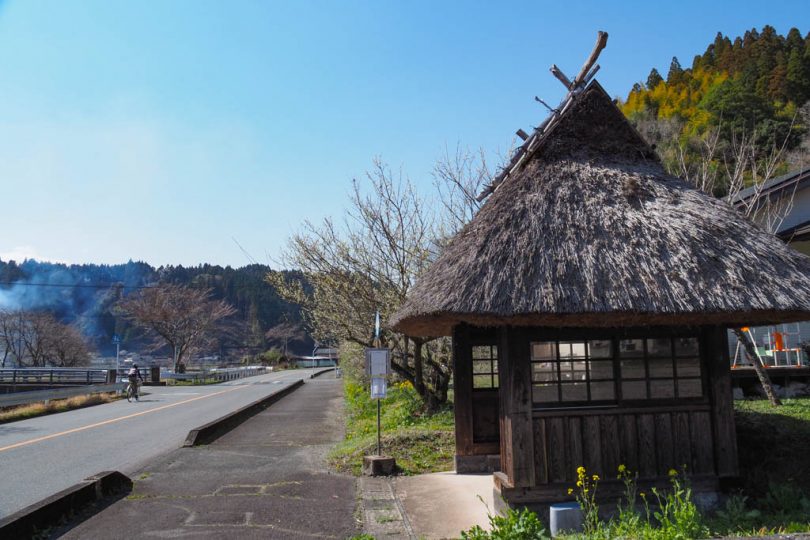
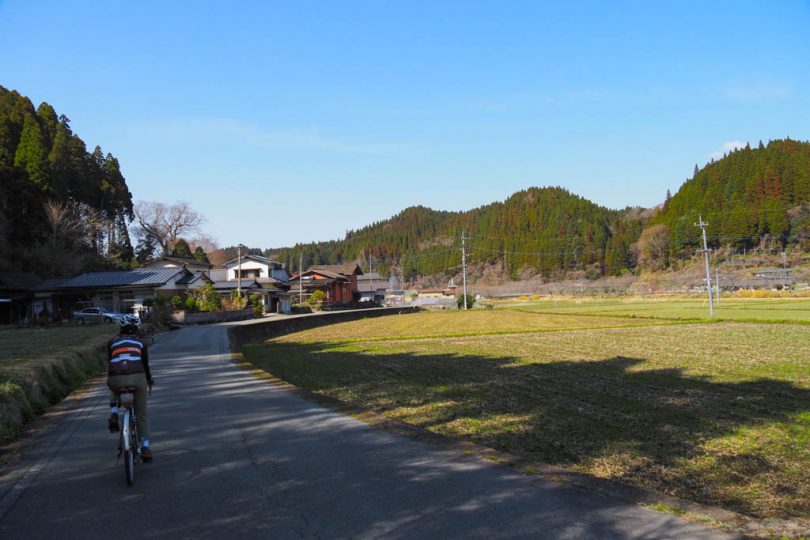
Ride along a narrow road through an old-fashioned village and you will come to “Takenokuma-no-O-Ketyaki”, large zelkova tree at Takenokuma, the largest zelkova tree in western Japan, more than 1,000 years old. It is bigger than you can imagine, and you can feel its power when you see it up close.
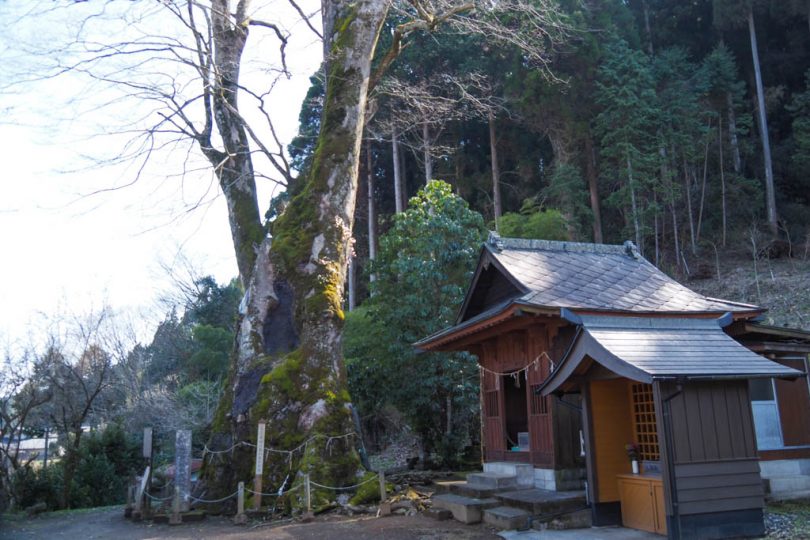
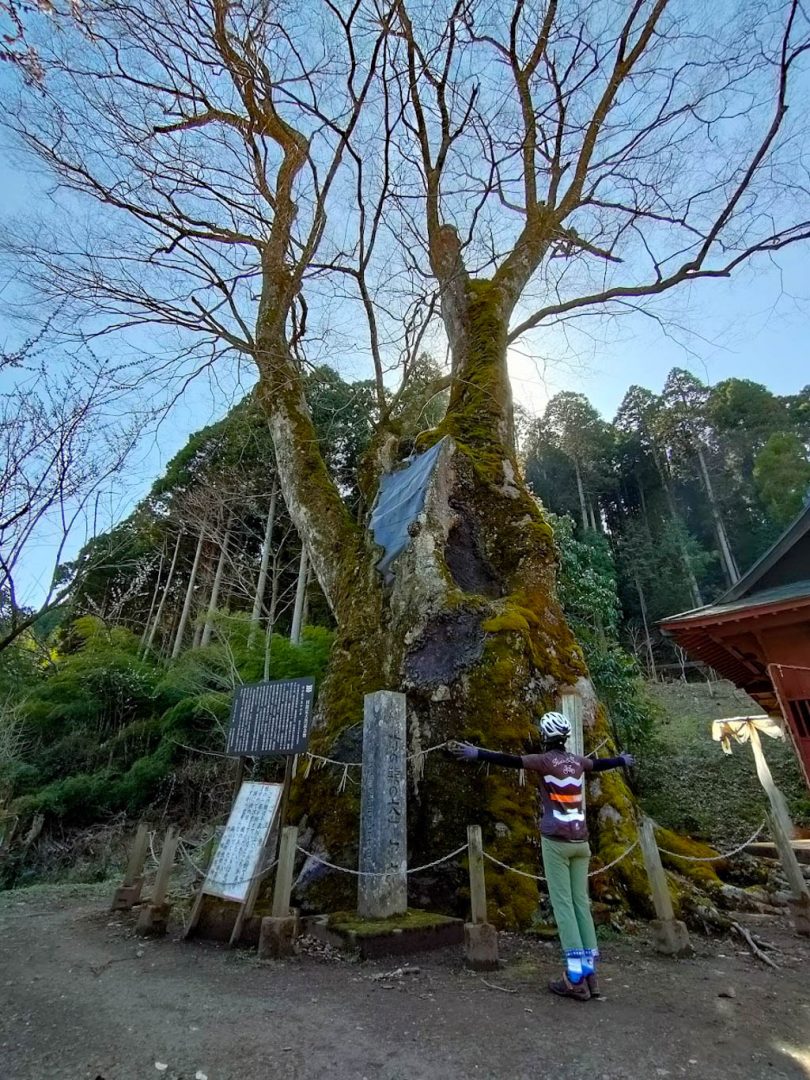
Tea room CHANOKO with delicious Yamecha tea
Turn right at the intersection with Minami-Oguni Post Office and stop by “Tea room CHANOKO” along カフェShigase River.

This general store and café run by a couple of cyclist owners is popular among cyclists, many of whom come from far away. There are bike racks in front of the store.

When we visited, the shop was full and I had to wait for a while, but we did not mind the wait as we browsed the general merchandise sales section.
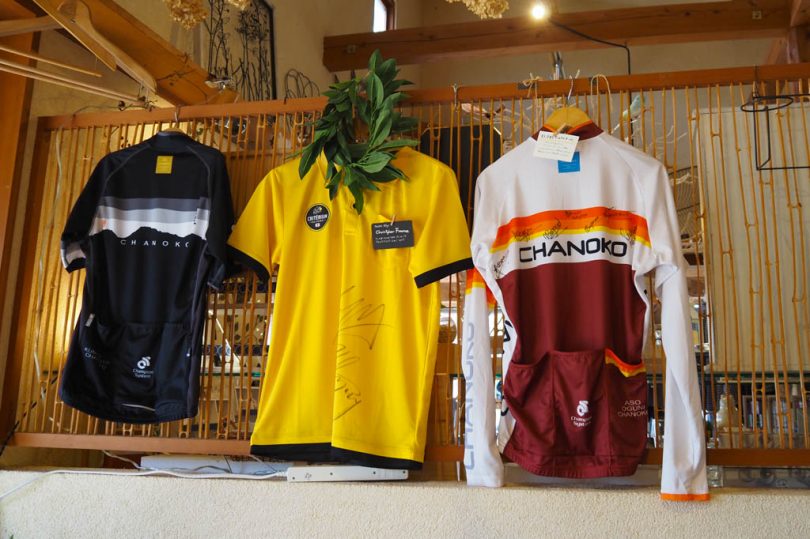
We had the “Ochanoko Set,” which is named after the store.
The set includes homemade apricot bean curd, a popular menu item, and cold tea from Hoshino Village in Yame City. The almond jelly is moderately sweet, and the Yame tea has a sweet flavor without astringency that soaks into your body.
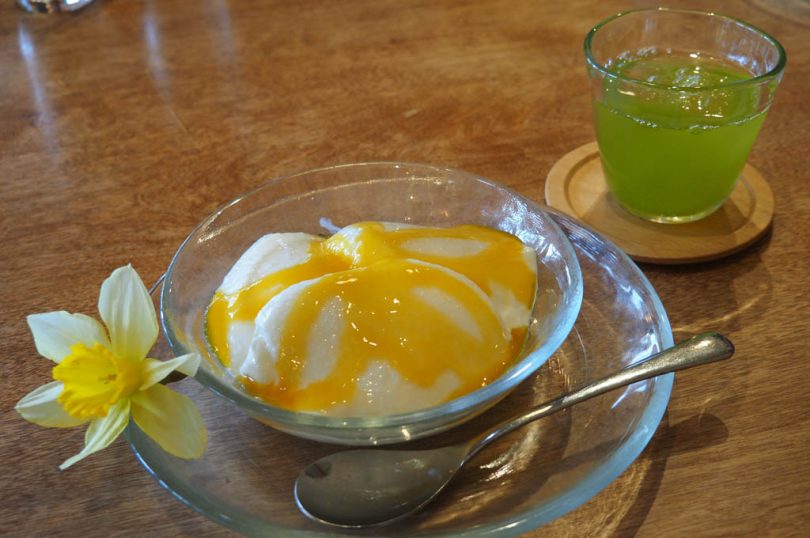
Oguni Township’s “Fukuun Sanja Mairi” (Tour of the Three Lucky Shrines)
We were looking forward to seeing a stamp rally called “Fukuun Sanja Mairi” in Oguni Township because we saw on the Internet that the event was being held, but that event had ended! What a pity.
Still, we will visit Oguni Ryo Shrine, Keyaki Suigen Shrine, and Kagamigaike Pond and return home with a boost in our financial fortune.
Oguni Ryo Shrine is dedicated to the god who pioneered Oguni Township. It is also called the “God of Thousand and Ten Thousand Ryo” because a worshipper won the first prize in a lottery.
The shrine is also home to a giant cedar tree called Sanjin Sugi (three sacred cedars). There are also other gods and guardian dogs that bring good luck and small deities that seem to be able to give you power.
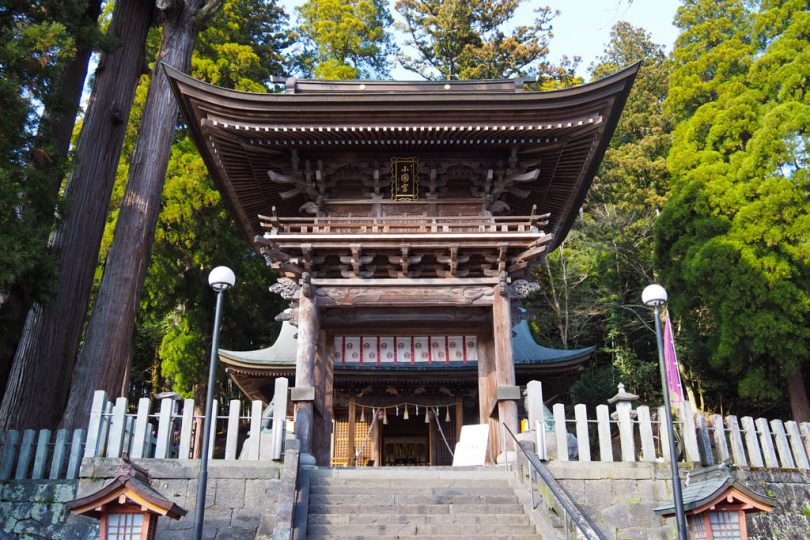

Keyaki Suigen (Zelkova Water Source) is a spring that flows from the base of a 1,000-year-old zelkova tree, and has been selected for the Kumamoto Landscape Award “Water and Green Landscape Award”. Legend has it that a local man once won a fortune when he purified himself here and then worshipped at the Oguniryo Shrine.

Kagamigaike Pond is a pond with a legend of a tragic love story from the Heian period (794-1185), but now it has become a spot of romantic fulfillment where people throw coins into the pond and hope to be reunited with their loved ones.
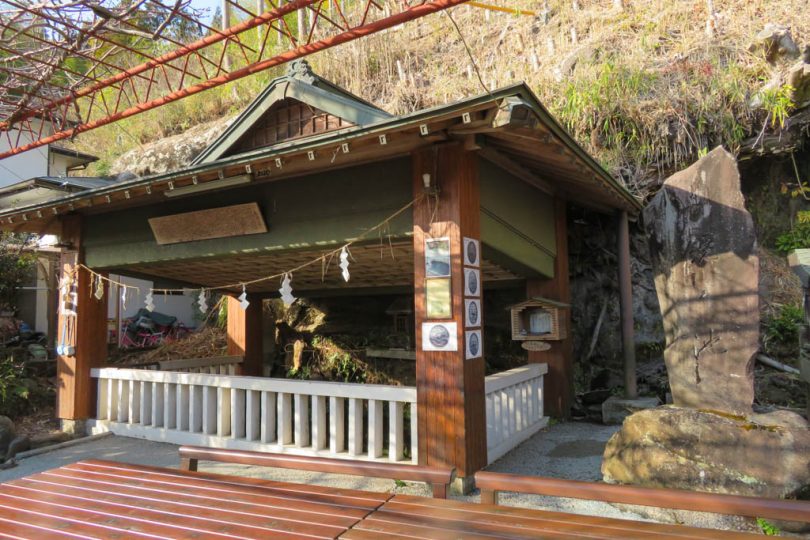
A replica mirror based on the legend is sunk at the bottom of the pond, so please take a peek.

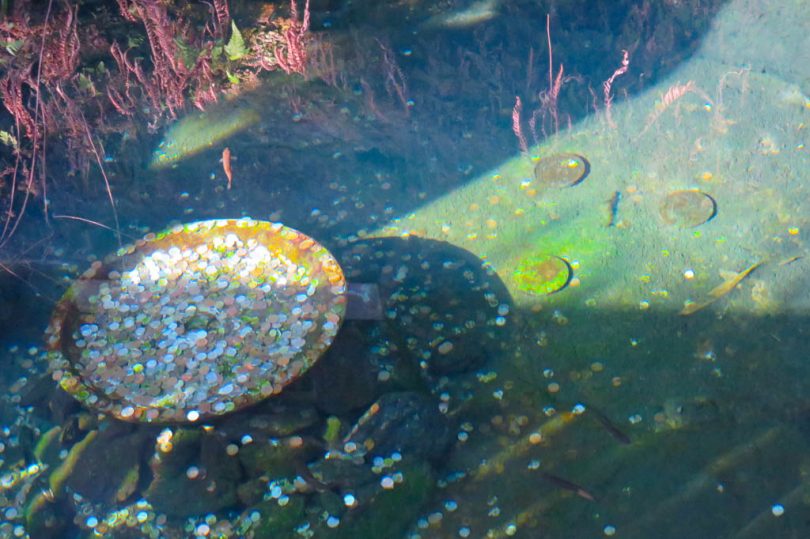
Back to the goal at Roadside Station Oguni
While admiring the townscape along Tsuetate River, we passed by Oguni Town Hall and saw a banner that read “Congratulation! Dr. Shibasaburo Kitasato’s portrait on the new 1,000-yen bill.” Oguni Town will be crowded with people when the new bills become available. We headed straight for the roadside station Oguni to reach our goal.
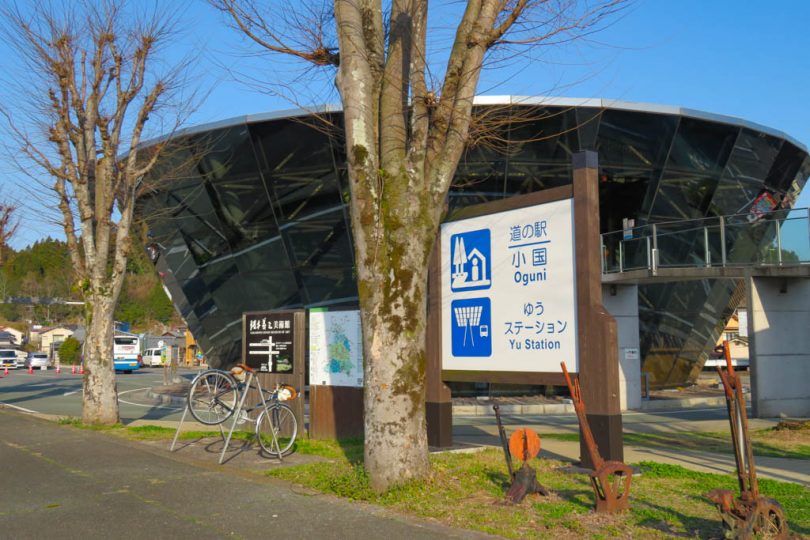
Course Introduction
▼ Former Japan National Railways Miyahara Line Walking
https://www.town.kumamoto-oguni.lg.jp/q/aview/145/269.html
▼wanohana
http://wanohana.chu.jp/
▼Tea room CHANOKO
https://chanoko.net/
Summary
This ride allows visitors to feel the town of Oguni where Dr. Shibasaburo Kitasato, whose portrait was adopted for the new 1,000 yen bill, was born and raised. This is a recommended route to enjoy the railroad remains and the superb view of headspring.


